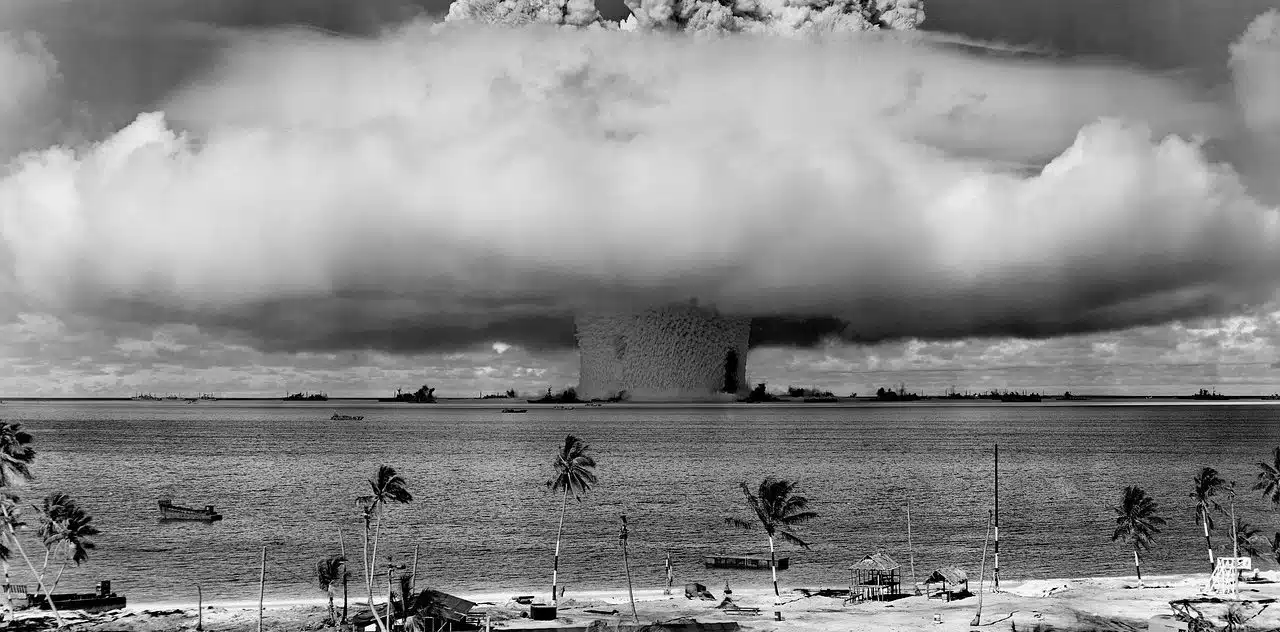
A nuclear reaction is a process that involves the combining and modification of the nuclei of atoms and subatomic particles.
A nuclear reaction is a procedure that leads to combining and modifying the nuclei of atoms and subatomic particles . Through this type of processes, the nuclei can combine or fragment, absorbing or releasing particles and energy according to each case.
Nuclear reactions can lead to the formation of different elements. When nuclei break apart, the reaction is known as nuclear fission . On the other hand, if the nuclei join together, we speak of nuclear fusion .
On the other hand, if the nuclear reaction requires energy to carry out, it is classified as an endothermic reaction . If, within the framework of the process , it releases energy, we are facing an exothermic nuclear reaction.
Study and management of nuclear reactions
The study and management of nuclear reactions are very important for human beings . Through nuclear reactions, it is possible to obtain large amounts of energy that are then used to generate electricity , allow the mobility of vehicles, etc. Nuclear reactions are also the basis of the so-called nuclear or atomic bombs , of immense destructive power.
Due to the level of energy they can release, nuclear reactions involve great risk . That is why many criticize the existence of nuclear power plants where these processes are promoted. An accident at a nuclear power plant, such as the one that occurred in the Ukrainian city of Chernobyl in 1986 , can be devastating and cause thousands of deaths, as well as irreparable environmental damage.
Currently, the creation and maintenance of plants dedicated to the generation of nuclear reactions is under debate due to existing pressures.
When a nuclear reaction extends over time as a neutron causes the fission of an atom, and this results in many neutrons being released and causing new fissions, it is called a nuclear chain reaction. The main condition for this type of reaction to take place is that at least one of the neutrons emitted in fission has the qualities to generate another fission.

Nuclear reactions are the basis of a nuclear or atomic bomb.
Investigation of chain processes
The history of the nuclear chain reaction dates back to 1933 , when Leó Szilárd , a scientist from Hungary , coined the term and a year later patented the concept of a simple nuclear reactor . Another idea that was used to build nuclear reactors was the theory postulated by physicist Nikolai Semionov , from the Union of Soviet Socialist Republics , called total chemical chain reaction , which also relies on more than one technology that uses mixture incineration. of gases.
Three years after the initial conception, Szilárd failed to attempt a chain reaction using indium and beryllium, two chemical elements. Only at the end of the 1930s did he discover, with the help of Enrico Fermi (a physicist of Italian origin) that by bombarding uranium with a series of neutrons it is possible to obtain a multiplicity of byproducts, since fission occurs in its nucleus. After this discovery, they made the pertinent demonstration.
It is worth mentioning that the discovery of Szilárd and Fermi led the acclaimed Albert Einstein to contact President Franklin D. Roosevelt by letter to warn him that Nazi Germany was probably building an atomic bomb .
The first self-sustaining nuclear reaction took place in a reactor created by Fermi , which he named Chicago Pile-1 , at the University of Chicago , at the end of 1942 . The Manhattan Project was carried out there, code name for the research that the United States , Canada and the United Kingdom carried out in World War II with the intention of developing the first atomic bomb before the Germans.
